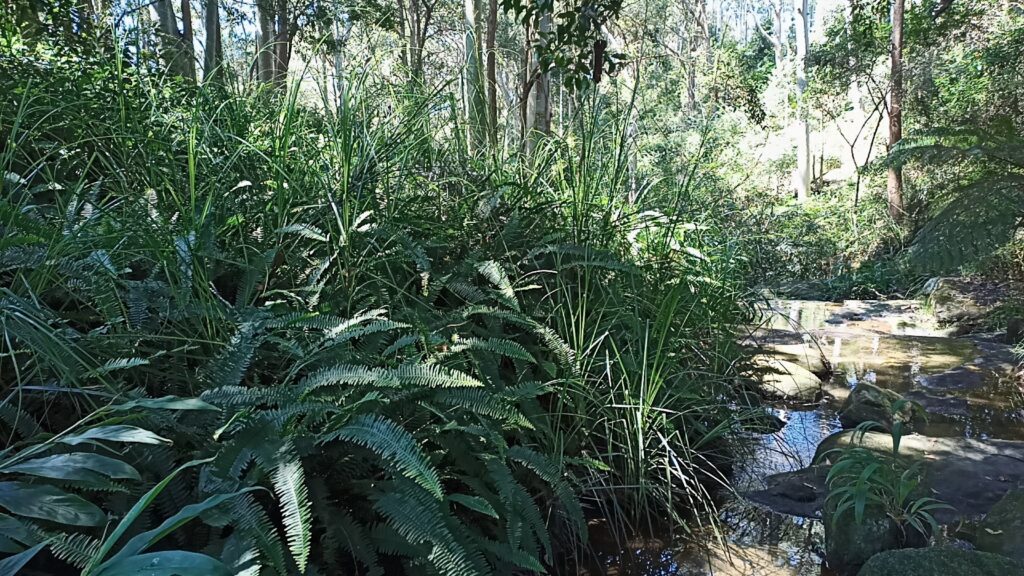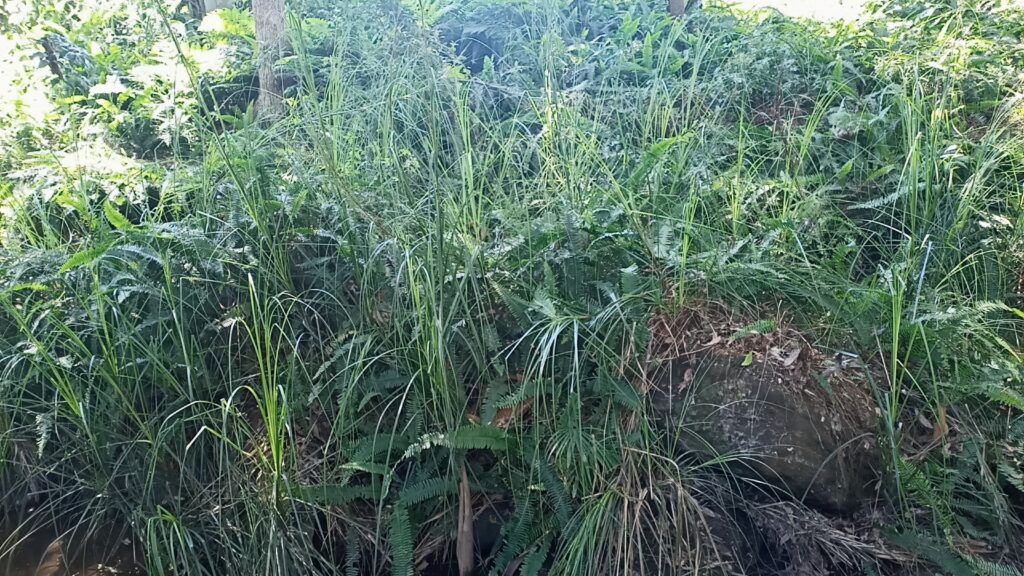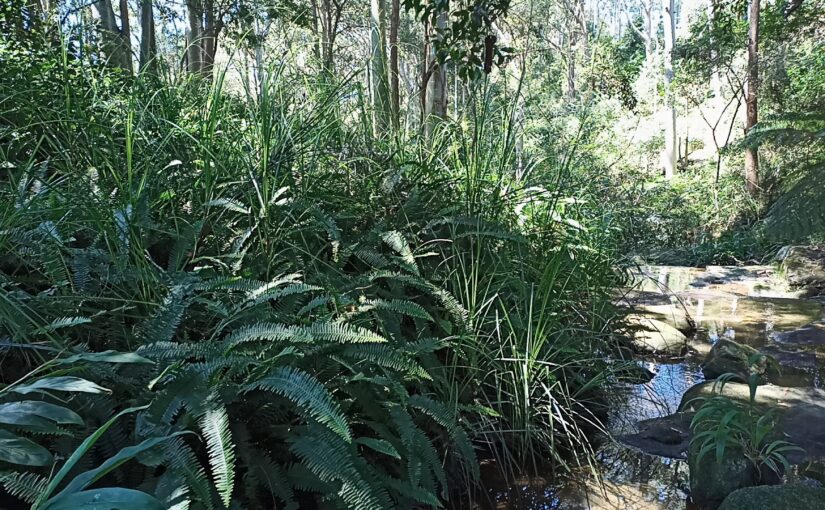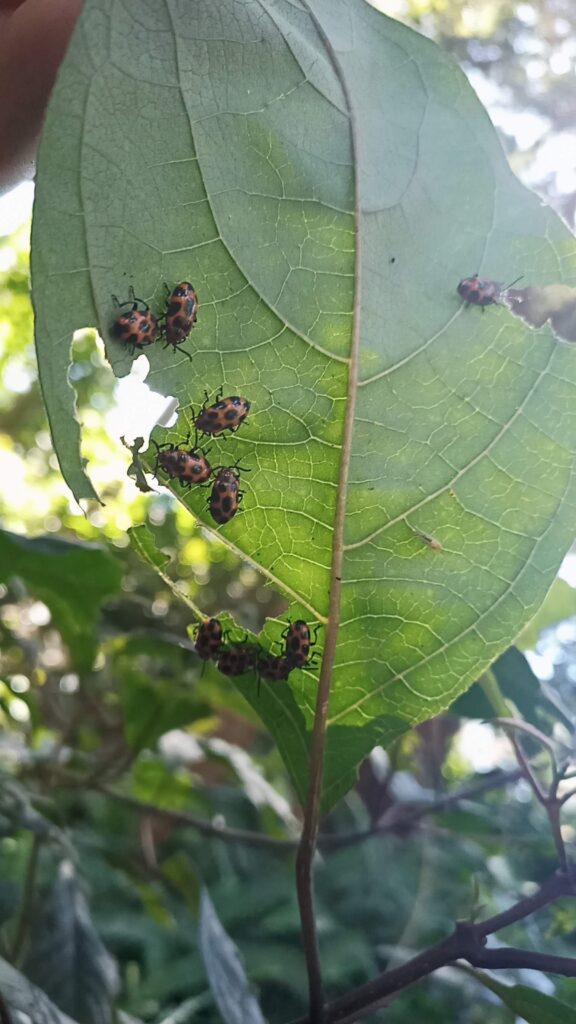It was a productive day. After working on a small amount of palm grass before first fall, I decided to finally help out the gardia growing between the first and second falls. Gardia has been growing well but it is still having to compete with a lot of fishbone fern and some ginger lilly.
Here it is before trying to thin out the fishbone fern…
 You can see in the image that the gardia (the tall grass seen in the center of the image), is getting above the fishbone fern but it is not very numerous. As I started weeding the fishbone fern I found a lot more gardia that was just too small to get to the light and hence were not looking very healthy.
You can see in the image that the gardia (the tall grass seen in the center of the image), is getting above the fishbone fern but it is not very numerous. As I started weeding the fishbone fern I found a lot more gardia that was just too small to get to the light and hence were not looking very healthy.
After spending half an hour or so removing fishbone fern, the gardia now has a lot more space to expand and young shoots should now be able to grow above the fern. The image below shows the spot after weeding. I tried to use some judgement as to how much I should remove. I would not want to allow erosion to take place. Fast flowing water can cover the area if there is heavy rain.
 A hairy clarodendrum I walk past when going to site A is being attached by these guys…
A hairy clarodendrum I walk past when going to site A is being attached by these guys…
It was a straight forward lantana and privet removal after this point. No photos to show because I was too tired afterwards. I starting an area requiring maintenance but then expanded on that to clear a good section under ‘Site A’.
One concern is a lot of plants showing a brown discolouration. I am hoping it has to do with the extra light coming through after a large gum was removed in a nearby residence but that does not seem to match. I noticed it on some bleeding hearts and most notably, on the giant tree fern along the creek after second falls. Hopefully it is not a big deal but it is a concern at present. Might need to ask the experts at lakemac landcare.

